Best phones in Australia 2018: the 10 top smartphones we've tested
Update: No surprise here, but we've added the outstanding Huawei P20 Pro to our list of the best phones in Australia for 2018. Read on to find out where it placed and why it made the cut!
- If you're interested in Apple's flagship handset, then perhaps you'd be more interested in our best iPhone list.
- Alternatively, if you prefer Google's OS, then our best Android phone roundup should be right up your alley.
2017 proved to be a stellar year for smartphones, and now, 2018 is looking to be even better. The recent launches of the iPhone 8 and iPhone 8 Plus, the Samsung Galaxy Note 8 and Samsung Galaxy S8 Plus late last year mean that the humble smartphone is destined to become faster, more powerful and even more versatile than ever before.
Here at TechRadar, we check out every phone under the sun, putting the ones that matter through our vigorous testing process to create our in-depth mobile phone reviews.
However, with so many to choose from, we've spent hours whittling them down to a top ten, taking into account power, specs, design and value for money. And we'll always point you in the direction of the latest handsets – after all, nobody wants to be carting around a phone that doesn't get any updates in a year's time, right?
So whether it's one of the many slick Android handsets, the latest iPhone or one from a range of other cool manufacturers, we've extensively tested them all so you don't have to!
Here are our rankings for the best smartphones around, currently available in Australia.
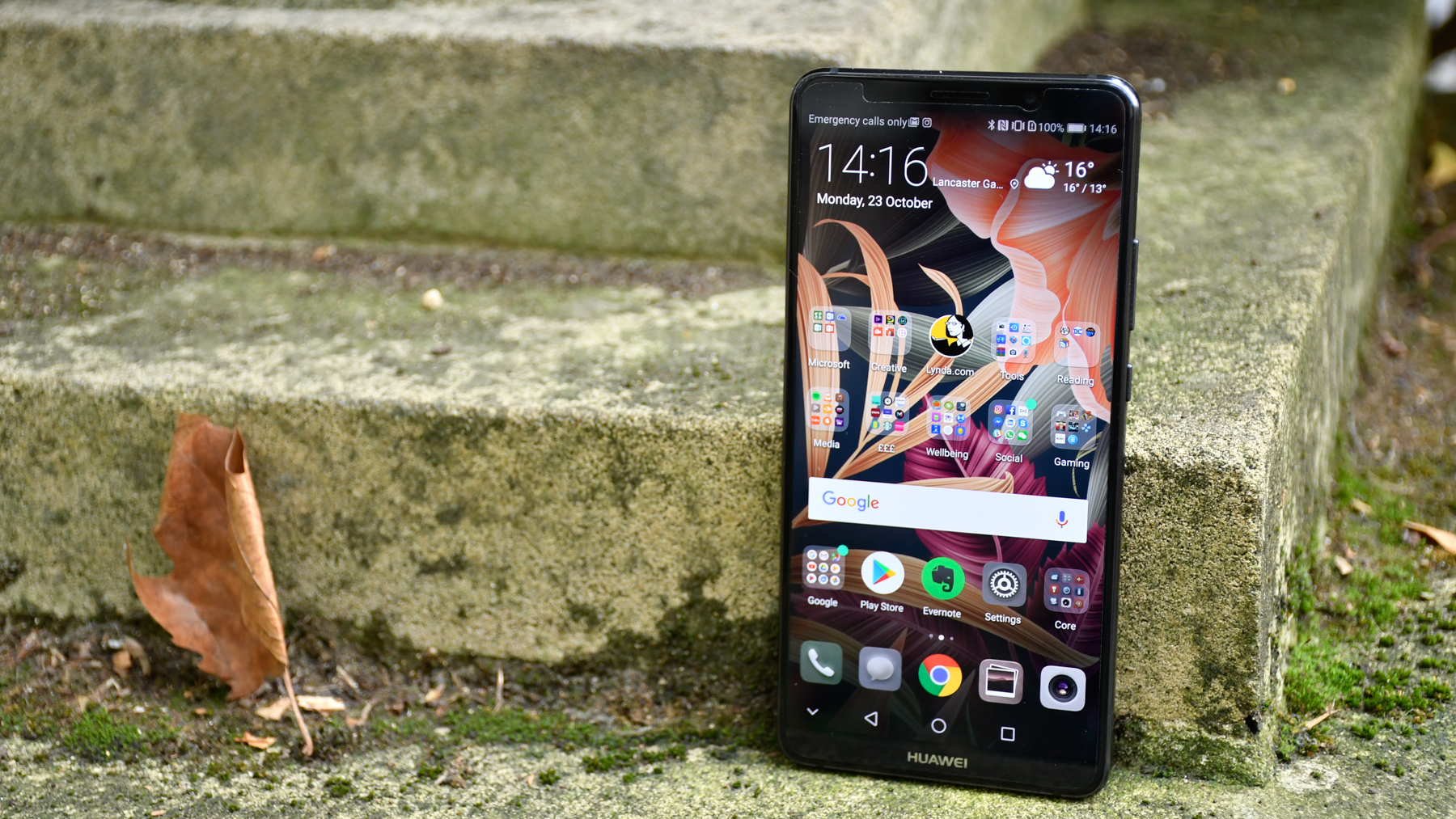
10. Huawei Mate 10 Pro
Huawei's newest Mate delivers the goods
Weight: 178g | Dimensions: 154.2 x 74.5 x 7.9mm | OS: Android 8.0 | Screen size: 6-inch | Resolution: 1080 x 2160 | CPU: Kirin 970 | RAM: 6GB | Storage: 128GB | Battery: 4000mAh | Rear camera: 20MP | Front camera: 12MP
Last year's Huawei Mate 9 wowed a lot of people by being an incredibly impressive handset at an affordable price point. Thankfully, the Chinese phone maker has delivered an impressively premium follow up in the Mate 10 Pro.
The first thing you'll notice about Huawei's new flagship is its stunning 18:9 display. While the regular Mate 10 offers a higher native resolution than the Mate 10 Pro, with Mate 10 Pro is saddled with a maximum resolution that’s only slighter higher than FHD (1080 x 2160), its AMOLED display makes up for it with richer colours, deeper blacks and a brighter picture overall.
Thanks to its ongoing partnership with Leica, Huawei has once again a delivered class-leading dual camera setup for the Mate 10 Pro – even the most novice photographer can achieve professional-looking results. Combining a 12MP colour (RGB) sensor with a 20MP monochrome sensor allows users to take incredible depth-of-field shots and stark black and white photos of incredible detail.
One of the camera’s most impressive features is how it uses the dedicated NPU (neural processing unit) embedded on Huawei’s new Kirin 970 processor to automatically adjust your camera settings based on what you’re shooting – it can even tell the difference between cats and dogs!
Huawei handsets are known for their large and long-lasting batteries, and the Mate 10 Pro continues to uphold this reputation. Its huge 4,000mAh battery kept it going for around two days of regular use, which is something that most other phones can only dream of.
While we aren't crazy about some of Huawei's choices on the Mate 10 Pro (the microSD slot has been ditched, same with the headphone jack), we love its astonishing photographical prowess and beautiful new design.
Read the full review: Huawei Mate 10 Pro
See the best Huawei Mate 10 Pro outright deals
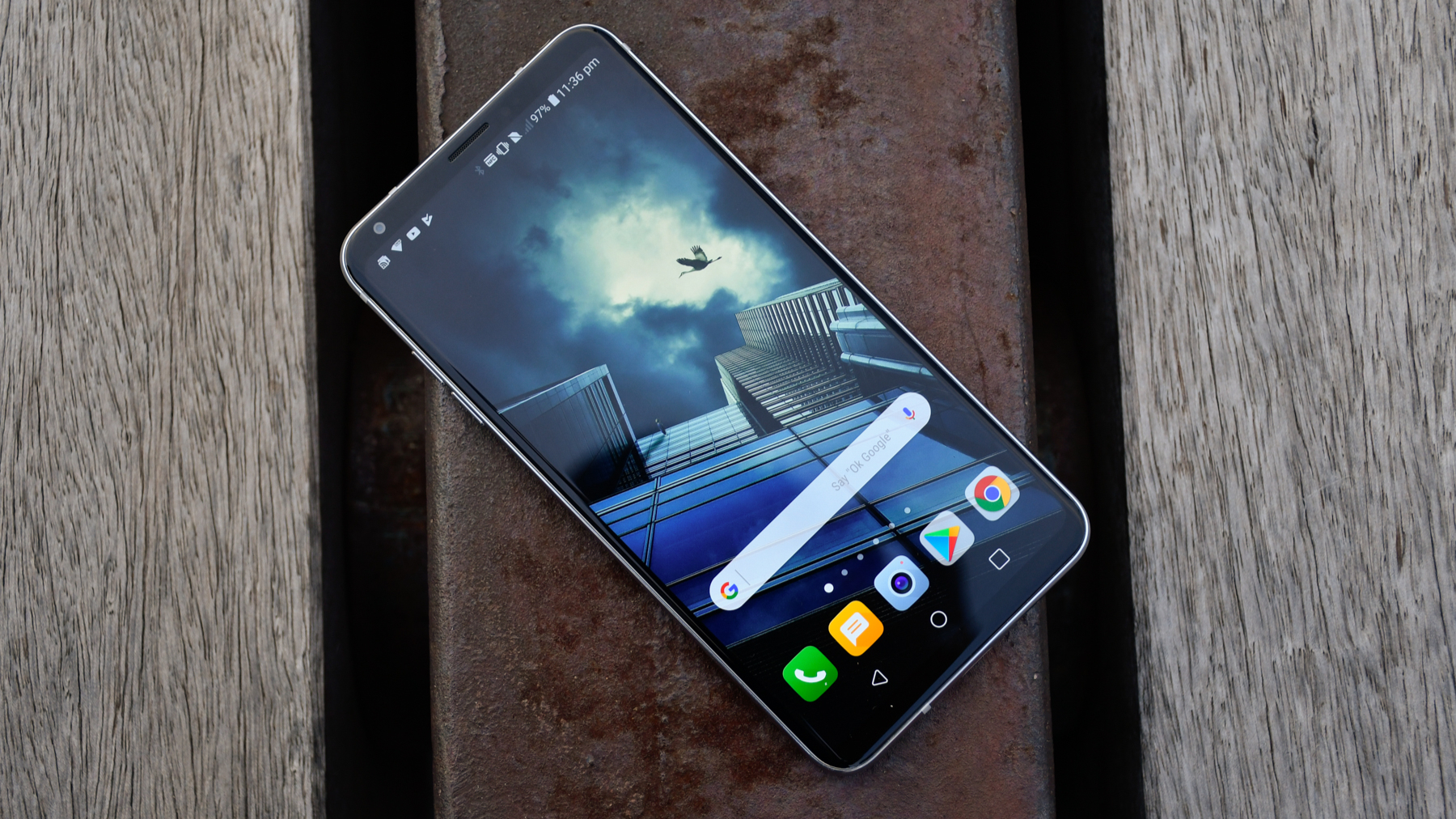
9. LG V30 Plus
LG's best handset gets even better
Weight: 178g | Dimensions: 154.2 x 74.5 x 7.9mm | OS: Android 8.0 | Screen size: 6-inch | Resolution: 1080 x 2160 | CPU: Kirin 970 | RAM: 6GB | Storage: 128GB | Battery: 4000mAh | Rear camera: 20MP | Front camera: 12MP
Though it's basically just an updated version of the original LG V30, the LG V30 Plus improves upon greatness by bringing Quad DAC audio, more storage and a better camera, among other features. Sure, it looks and feels exactly the same, but that's fine — the LG V30 Plus is the only version of that handset available in Australia now anyway.
Though the LG G6 is an impressive handset in its own right, there's no doubt in our minds that the V30 Plus is the best phone that LG has released to date. Its beautiful design,is complemented by powerful internals (it's the first LG phone to use a Snapdragon 835 chipset, something the G6 surprisingly lacked), a wonderful camera and a truly beautiful 18:9 QHD+ AMOLED display that supports HDR for brilliant, lifelike colour.
For music lovers, there's no better phone out there, as its Quad DAC (digital to analog converter) audio capability lets you play Hi-Res FLAC audio files and will also improve the quality of your regular MP3s and audio files.
As for its photography capability, it's got a terrific dual camera setup that lets you take wide-angle shots that fit more content in, and it also boasts new Point Focus and Cine Video colour grading tools which take your photography and video recording to another level.
Quite frankly, the LG V30 Plus stands toe-to-toe with any other flagship handset out there at the moment.
Read the full review: LG V30
See the best LG V30 Plus outright deals

8. Google Pixel 2
Improves on the original Pixel in (almost) every way
Weight: 143g | Dimensions: 145.7 x 69.7 x 7.8mm | OS: Android 8.0 | Screen size: 5-inch | Resolution: 1080 x 1920 pixels | CPU: Snapdragon 835 | RAM: 4GB | Storage: 64/128GB | Battery: 2700mAh | Rear camera: 12MP | Front camera: 8MP
Boasting arguably the best camera on any smartphone released in 2017, the Google Pixel 2 improves upon the original Pixel in a number of ways.
Though its bezel-heavy design is a little outdated, given that almost all of the other Android flagships (including the Pixel 2 XL) have embraced the bezel-free craze, the Pixel 2 still feels a lot slicker in terms of design than its predecessor.
Its camera, despite being a single-lens setup, has been rated as the best on any smartphone by the renowned camera benchmarking team at DxOMark, and has proven to be exceptional in all of our tests.
We do wish Google had made a few more advancements with this year's Pixel – there's still microSD slot and the display is only 1080p), but we're happy to say that the Pixel 2 is now IP67 certified for water and dust resistance.
If you can look past its large bezels, lack of headphone jack and expandable memory, there's plenty to love about the Google Pixel 2.
Read the full review: Google Pixel 2
See the best Google Pixel 2 telco plans
See the best Google Pixel 2 outright deals
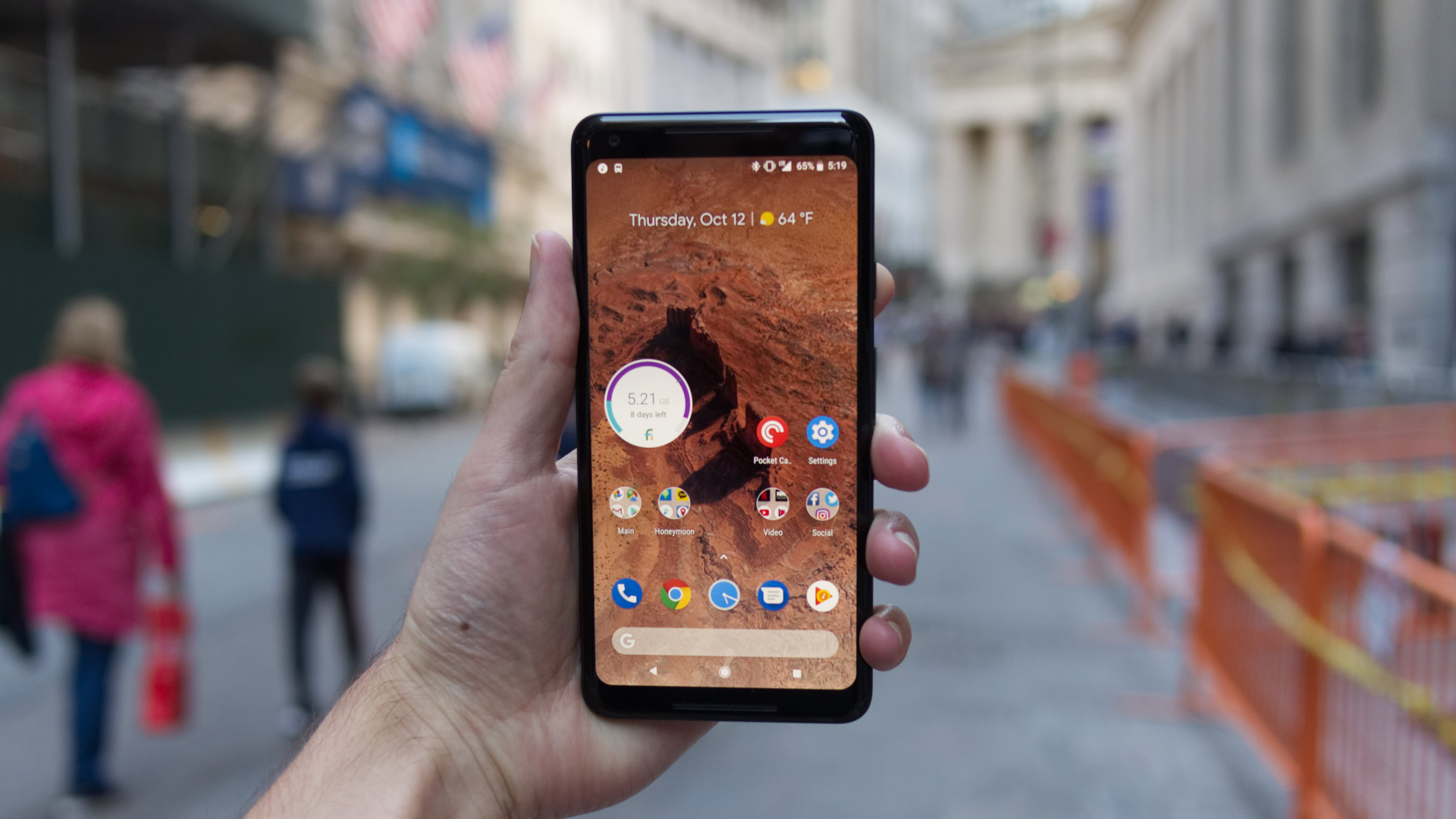
7. Google Pixel 2 XL
A refined design and a stunning camera make the 2 XL a winner
Weight: 175g | Dimensions: 157.9 x 76.7 x 7.9mm | OS: Android 8.0 | Screen size: 6-inch | Resolution: 1440 x 2880 pixels | CPU: Snapdragon 835 | RAM: 4GB | Storage: 64/128GB | Battery: 3520mAh | Rear camera: 12MP | Front camera: 8MP
Thanks to a beautiful new design that incorporates an 18:5 QHD+ display and smaller bezels, and an even better camera that achieves dual camera quality from a single lens, the Pixel 2 XL is a real step forward for Google's smartphone brand.
Sure, there are some downsides: the headphone jack is gone and there's still no microSD card slot, but we can now add an IP67 water and dust certification to its list of stellar features.
Once again, fans of the 'pure Android' experience will be in heaven here, as Google's OS provides the Pixel 2 XL with slick performance and a clutter-free interface.
There are so many handsets with dual camera setups these days, and yet the Pixel 2 XL's single-lens setup manages to pip almost all of them. A brilliant portrait mode and an incredibly fast capture speed are just two of the features you can look forward to using on the Pixel 2 XL.
If you're looking for a handset that's big, offers terrific performance and will take astonishing pictures, then the Google Pixel 2 XL is the one for you.
Read the full review: Google Pixel 2 XL See the best Google Pixel 2 XL telco plans See the best Google Pixel 2 XL outright deals
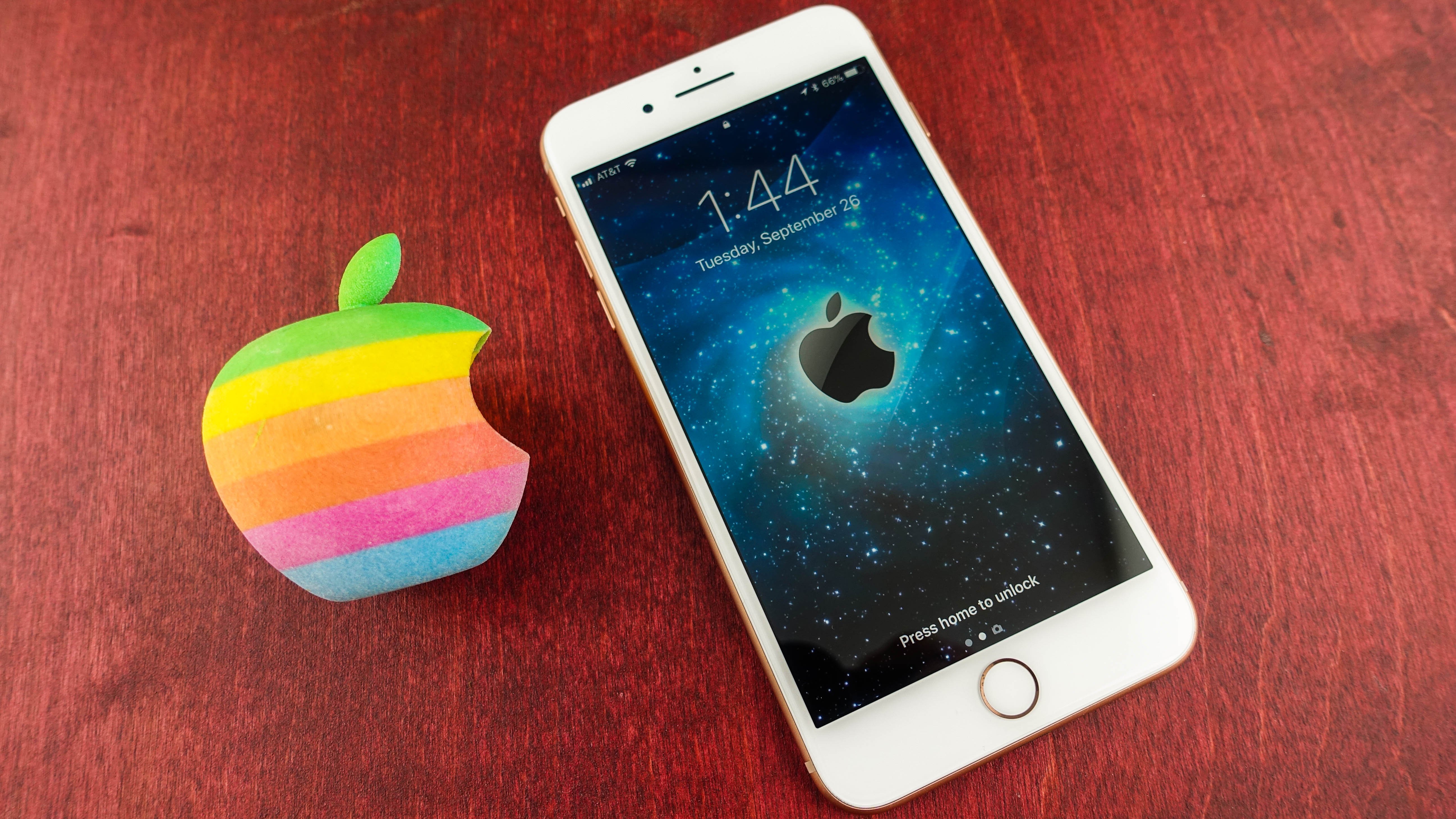
6. Apple iPhone 8 Plus
Undoubtedly the best iPhone currently available
OS: iOS 11 | Screen size: 5.5-inch | Resolution: 1920 x 1080 | RAM: 3GB | Storage: 64GB/256GB | Battery: 2,691mAh | Rear camera: 12MP + 12MP | Front camera: 7MP
The iPhone 8 Plus is a great phone – there’s no doubt about that. It’s a better phone that anything Apple has produced before, and it’s, well, just done in a very Apple way.
There are some strong upgrades: the camera has been enhanced, the internal workings are now among the most powerful in the industry, and little tweaks throughout smooth off rough edges in a way that makes us feel Sir Jony Ive climbed inside his computer and lathed them off himself.
Whether that’s a subtle haptic double buzz when pressing the shutter on the camera, or being able to ‘feel’ the numbers clicking when selecting the time on the alarm, it’s those little delights that… delight.
Those previously mentioned Portrait Lighting effects need some real power, and that’s where the A11 chip comes in. Any app that uses high levels of photo manipulation worked pretty flawlessly in our tests, with no lag when working with multiple image layers.
It’s hard to convey the usefulness of all this power for the average user, one who might not use such features regularly – but it’ll keep your iPhone singing more sweetly for the next two or three years compared to the previous generations.
The iPhone 8 Plus is a phone for the Apple fan who wants the longest battery life possible, and the most screen to look at, without having to pay the premium the iPhone X costs.
Read the full review: Apple iPhone 8 Plus
See the best iPhone 8 Plus telco plans
See the best iPhone 8 Plus outright deals
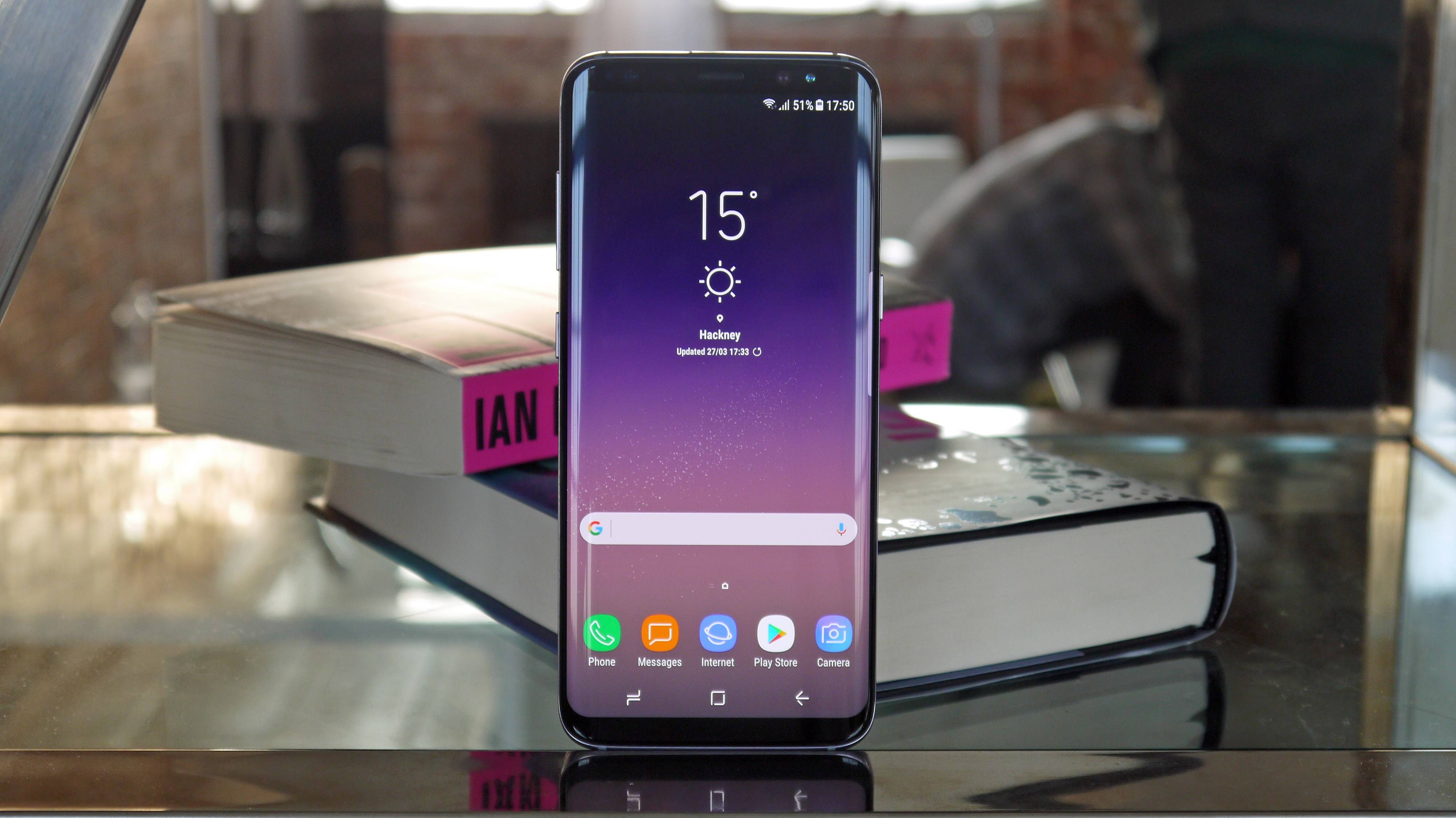
5. Samsung Galaxy S8
A turning point in smartphone design, the Galaxy S8 is truly exceptional
OS: Android 7 | Screen size: 5.8-inch | Resolution: 1440 x 2960 | RAM: 4GB | Storage: 64GB | Battery: 3000mAh | Rear camera: 12MP | Front camera: 8MP
The Samsung Galaxy S8 was for a time the best phone in the world for a few reasons, but none more so than the display: it makes every other handset released before it look positively antiquated. Heck, it’s probably one of the best phones ever made, and will be pointed to in future retrospectives as a real turning point in smartphone design.
And while the Samsung Galaxy S9 has bested it in many ways, the Galaxy S8 is almost as good and comes at a more affordable price since the release of its successor.
The camera is still excellent, the screen quality the best that can be found right now and it's smashed through all our benchmarking tests. But back to how Samsung has designed the Galaxy S8… it's just pure premium from start to finish.
The way the front and back of the phone roll into the metal rim that sits around the outside of the phone is simply exquisite, and there's a real pleasure to be had when just rolling this phone around and around in your palm.
While it costs a lot to own, there are a lot of premium reasons for the premium price, and with the screen Samsung has managed to find some impressive innovation at a time when there's very little to be found in smartphones.
The Samsung Galaxy S8 is designed for those who just want a great phone and aren’t bothered about the cost. It’s a premium handset in every sense of the word – you’re paying more to get something really lovely.
Read the full review: Samsung Galaxy S8
See the best Samsung Galaxy S8 telco plans
See the best Samsung Galaxy S8 outright deals
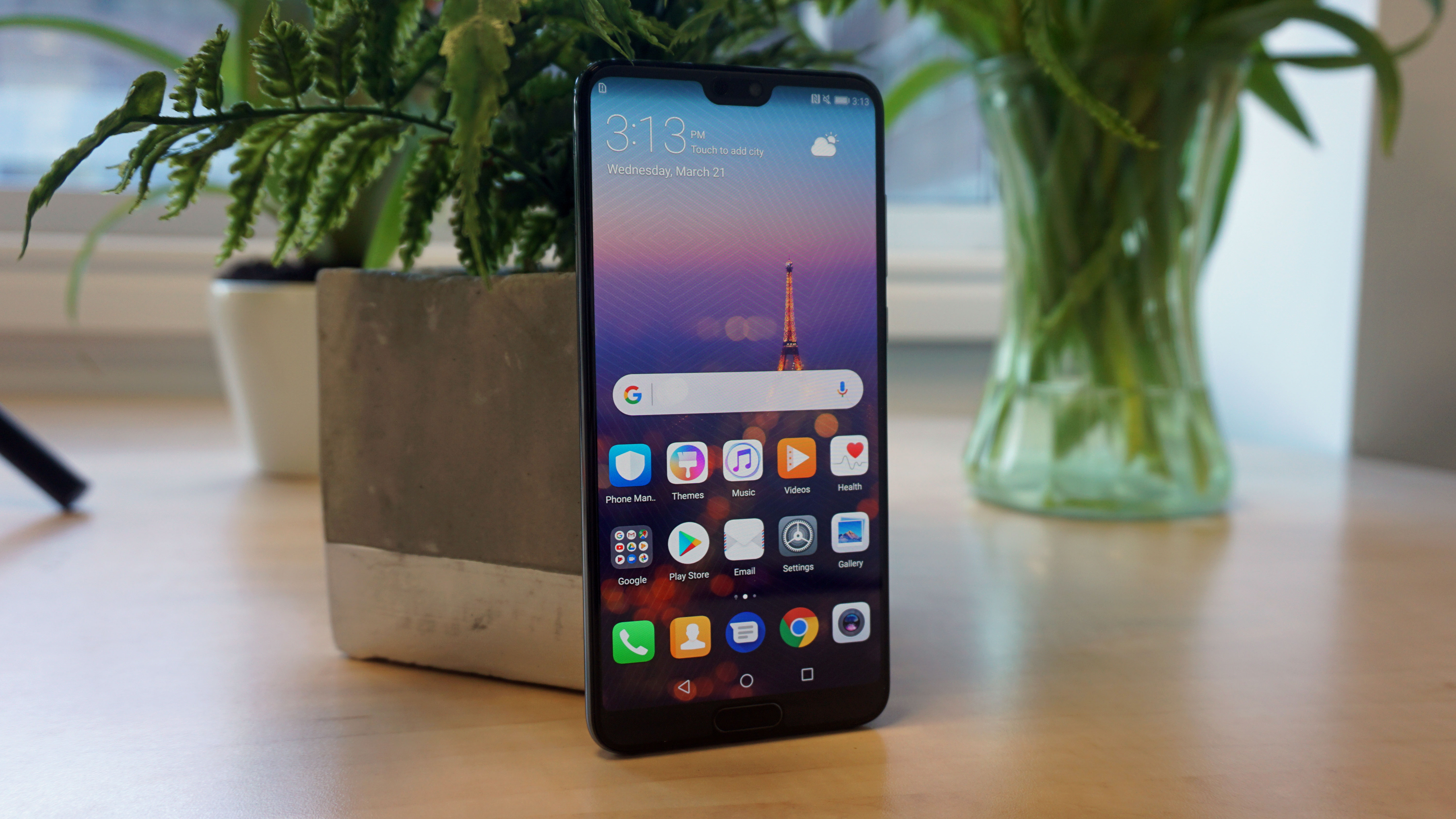
4. Huawei P20 Pro
The most extraordinary camera on a smartphone to date
Weight: 180g | Dimensions: 155 x 73.9 x 7.8mm | OS: Android 8.1 | Screen size: 6.1-inch | Resolution: 1080 x 2240 | CPU: Kirin 970 | RAM: 6GB | Storage: 128GB | Battery: 4000mAh | Rear camera: 40MP + 20MP + 8MP | Front camera: 24MP
If you thought Huawei's Mate 10 Pro and P10 Plus boasted amazing cameras, you ain't seen nothin' yet — the Chinese phone-maker's latest flagship handset packs an incredible triple-camera setup on its rear, as well as one of the greatest front-facing snappers we've ever seen.
Along with its unrivalled cameras, the Huawei P20 Pro sports many of the features we've come to expect from premium phones, including an AMOLED display and IP67 water and dust resistance. That the P20 Pro's attractive $1,099 price point comes in well below Apple's iPhone X (up to $1,829) and Samsung's Galaxy S9 Plus ($1,499) is just the icing on the smartphone cake.
Right off the bat, the P20 Pro impresses with its high-end, stylish design. Its bezel-free notched display might be a controversial design choice on Huawei's part, but thankfully, an option to hide that notch entirely by adding a seamless on-screen black strip is available in the device's display settings. We also adore its utterly unique Twilight colour option, which sports a beautiful purple-to-turquoise gradient effect on the phone's rear.
But really, it's the phone's camera that you'll likely want to hear more about, and we can't blame you — capable of shooting incredibly detailed 40MP images using 5x optical zoom, the P20 Pro's Leica-branded camera is starting to rival DSLR's in some respects. Easily boasting the biggest sensor of any smartphone camera yet, the P20's stabilisation functionality allows you to take long exposure, low-light shots without the use of a tripod.
Like the Mate 10 range before it, the Huawei P20 Pro's photographic prowess is backed by the Kirin 970 processor's dedicated Neural Processing Unit, allowing the handset's AI smarts to automatically adjust its settings to take the best possible picture for you.
Simply point at something and the phone will know what you're photographing, whether it be a sunset, a tree, a dog, a cat, flowers or food. It can also automatically detect whether you're taking an extreme close-up, or aiming for a beautiful portrait shot with blurred background. Of course, the phone also offers a pro photography mode, allowing you to tweak advanced settings like ISO to your heart's content.
On the flip side of the phone, its 24MP selfie camera is capable of taking some extremely flattering selfies. On top of this, an unprecedented number of beauty features allow you to present an ideal version of yourself, with the ability to tweak everything from face shape, skin tone, blemishes... even the bags under your eyes! An advanced 3D lighting-effects mode even lets you reposition the photo's light source, though this can leave you looking a little waxy.
Admittedly, we're still a little sore over Huawei's decision to drop the microSD slot and headphone jack from its premium phones going forward, and this isn't quite the best phone for recording video, but those flaws seem pretty minor when compared to everything the P20 Pro does so incredibly well.
Read the full review: Huawei P20 Pro
See the best Huawei P20 Pro outright deals
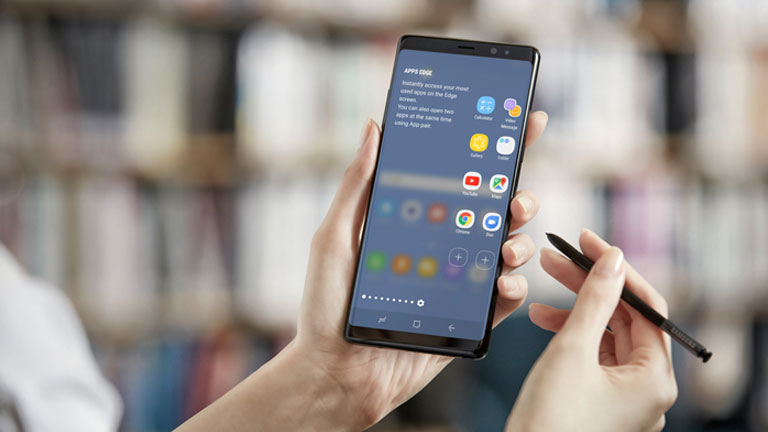
3. Samsung Galaxy Note 8
The biggest and best phone around, but it'll cost you
OS: Android 7.1.1 | Screen size: 6.3-inch | Resolution: 1440 x 2960 | RAM: 6GB | Storage: 64GB |Battery: 3300mAh | Rear camera: 12MP+12MP | Front camera: 8MP
Moving past Samsung's Note-related struggles from last year, the company has, against all odds, returned with what is perhaps the best phablet of all time – the Samsung Galaxy Note 8. The handset acts as demonstration of Samsung’s eagerness to move forward, seeking to put that previous mishap well in the past, while also serving as a reminder of how prestigious the Note line was, is, and (the company hopes) always will be.
Adopting a design that’s based heavily on the Galaxy S8 Plus from earlier this year, the Galaxy Note 8 differentiates itself by being slightly bigger and sporting the signature squarish look that has been synonymous with the line since its inception. Immediately, this gives the monolithic Note 8 a more professional look and feel, one that’s punctuated by the device’s retractable S Pen – one look and it’s clear that the Note 8 is ready to take care of business.
Samsung's class-leading Infinity Display is better than ever here, with the Note 8's 6.3-inch display providing absolutely jaw-dropping images from every angle. This is one screen that's bound to turn a few heads.
The Galaxy Note 8 is also the most powerful phone that the company has ever produced, with 6GB of RAM giving it the processing edge over its S8 range. It's also the company's first flagship with a dual camera setup, allowing users to take stunning depth-of-field and portrait shots and take advantage of 2x optical zoom functionality.
If there's a downside to the Note 8, it's that Samsung has reduced the size of its battery. Given last year's battery issues, this is completely understandable, though at 3,300mAh, it’s 200mAh smaller than the battery featured in the S8 Plus, despite being a larger phone with an extra 2GB of RAM to work with.
And at $1,499, it's also one of the more expensive handsets on the market. So if you can live without the included S Pen functionality, the cheaper and similarly specced Galaxy S8 Plus might be a better option for you. However, if you're set on owning the most premium phablet currently available, look no further than the Galaxy Note 8.
Read the full review: Samsung Galaxy Note 8
See the best Samsung Galaxy Note 8 telco plans
See the best Samsung Galaxy Note 8 outright deals
Insert heading
2. Apple iPhone X
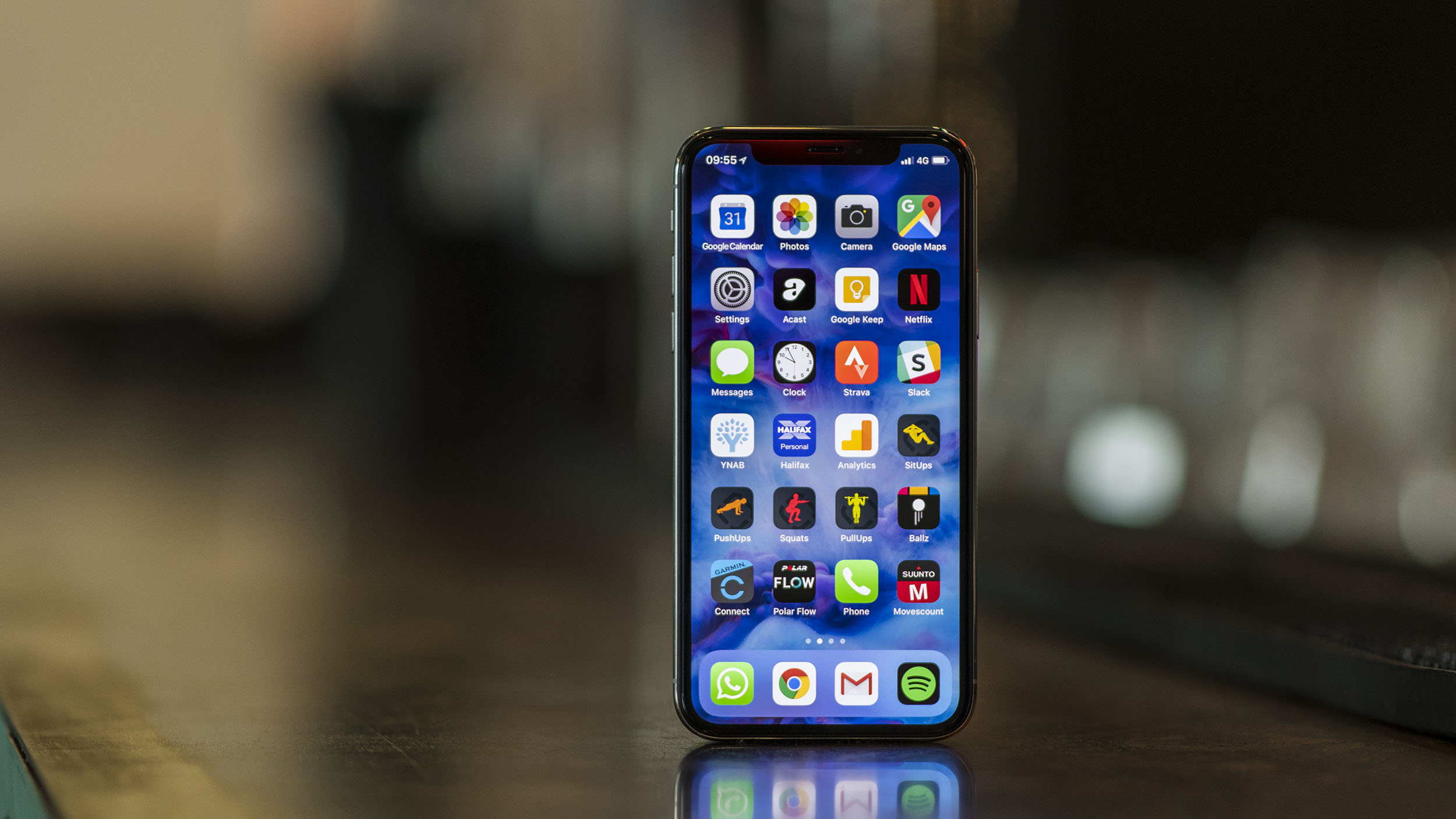
Apple's most revolutionary iPhone to date
OS: iOS 11.1.1 | Screen size: 5.8-inch | Resolution: 1125 x 2436 | RAM: 3GB | Storage: 64/256GB |Battery: 2716mAh | Rear camera: 12MP+12MP | Front camera: 7MP
Though the iPhone 8 and 8 Plus are undoubtedly great handsets, the real update that Apple phone fans had been waiting years for finally arrived with the iPhone X, delivering the first real evolution of the world's most famous smartphone since the iPhone 6 released in 2014.
Thanks to its mind-blowing bezel-free design, the iPhone X is an absolutely stunning phone to behold. The Cupertino company did away with its home button entirely, pushing gesture-based control into the spotlight.
Once you've finished marvelling at its futuristic design, you may also notice that Apple has also upped its display game with a seriously gorgeous 5.8-inch OLED screen that delivers infinite contrast and vibrant colours.
The decision to ditch the fingerprint scanner also led to one of the boldest new features in the iPhone range: Face ID. Much more advanced than the facial recognition found in other smartphones, the iPhone X creates a three-dimensional scan of your face that evolves along with you.
Big improvements have also been made to the iPhone's front-facing camera, with new TrueDepth technology allowing for some truly dynamic selfies. On the rear, its camera is quite similar to the iPhone 8, with some minor differences, including an aperture of f/2.4 and a wide-angle lens has optical image stabilisation.
Quite frankly, the iPhone X is as close to perfection as Apple has ever gotten with an iPhone, and if it weren't for its astronomical price point, it would have found itself in the top spot on this list.
Read the full review: iPhone X
See the best iPhone X telco plans
See the best iPhone X outright deals
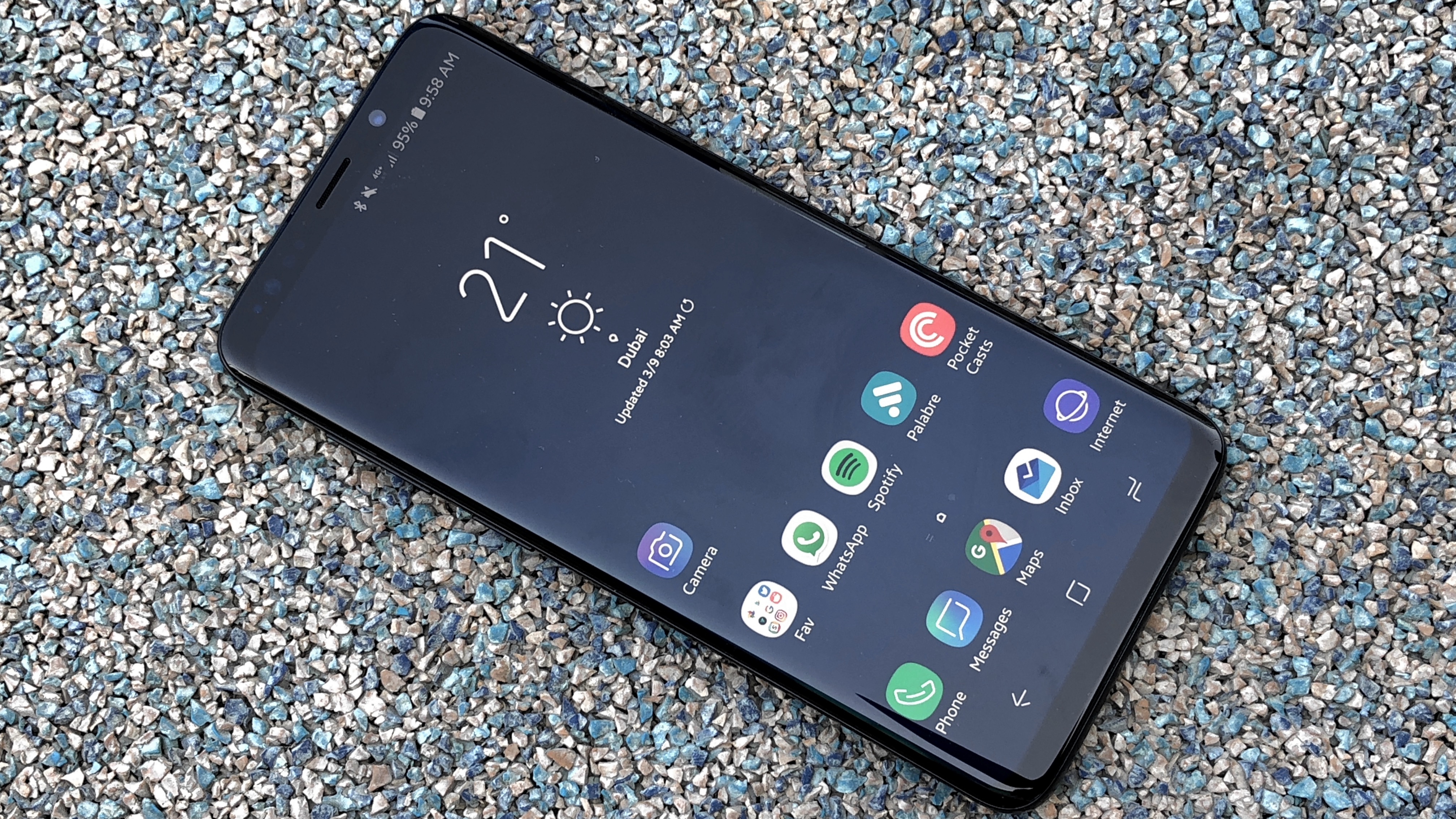
1. Samsung Galaxy S9 Plus
The best Galaxy phone that Samsung has ever released
OS: Android 8 | Screen size: 6.2-inch | Resolution: 1440 x 2960 | RAM: 6GB | Storage: 64GB / 256GB | Battery: 3500mAh | Rear camera: 12MP | Front camera: 8MP
So how do you follow-up one of the best flagship phones ever made? By making an even better one, that's how! With its new Galaxy S9 and S9 Plus, Samsung has addressed pretty much every issue levelled at the S8 range, from the awkward fingerprint sensor placement to the underwhelming built-in speakers.
In terms of its design, you'd be forgiven for thinking the S9 Plus looks almost identical to its predecessor from the front, with the only real change coming in the form of a 1.4mm difference in height (that's thanks to the S9 Plus' smaller bottom bezel). The back is where the biggest changes have occurred, with a new vertical camera and fingerprint sensor layout that instantly feels more natural than last year's model.
At the base of the phone, you'll find that Samsung has kept the 3.5mm headphone jack around for at least another year, and it's now accompanied by stereo speakers for more immersive sound — much better than last year's mono offering.
Having listened to music through the S9 Plus' new speaker mouth (so long, speaker grill) we can confirm that a drastic improvement in sound quality has taken place. Audio is much fuller than before, exhibiting some added depth and bass. Sure, it won't inspire you to throw away your Bluetooth speaker, but the difference in audio quality is significant — especially when you take into account the inclusion of Dolby Atmos support.
But the Galaxy S9 Plus' biggest selling point is undoubtedly its revamped dual camera setup (something not found on the standard S9), which is now capable of taking super slow motion video (up to 960fps at 720p resolution) and has variable aperture capabilities, which allows the phone to automatically switch between f/1.5 (for very low-light photography) and f/2.4 (super bright and vibrant photography). You can even seen the camera's tiny shutter opening and closing depending on available light.
While Apple may have beaten it to the punch with its AR-enabled Animoji, Samsung has come up with its own equivalent AR Emoji mode, which lets you create a digital avatar (and a set of shareable GIFs) of yourself. It's a good bit of fun, but if you're not the selfie type, your mileage on this feature may vary.
Of course, there are a number of other factors that put the Samsung Galaxy S9 Plus ahead of the competition, from its incredible QHD+ 18:9.5 AMOLED display, to its powerful new Exynos 9810 chipset. However, it's the way that Samsung has truly listened to its customers and created a phone specifically for them that makes the Galaxy S9 Plus our current pick for best smartphone.
Read the full review: Samsung Galaxy S9 Plus
See the best Samsung Galaxy S9 Plus telco plans
See the best Samsung Galaxy S9 Plus outright deals
We're all about reviewing and rating all the phones here at techradar. There's nothing we like more than brewing a pot of tea and deciding where each new phone should sit in the list.
However, sometimes they don't make it into the top 10 - sad, we know, but that doesn't mean you shouldn't have a quick look to see if they fit your needs. After all, there are very few bad phones these days...
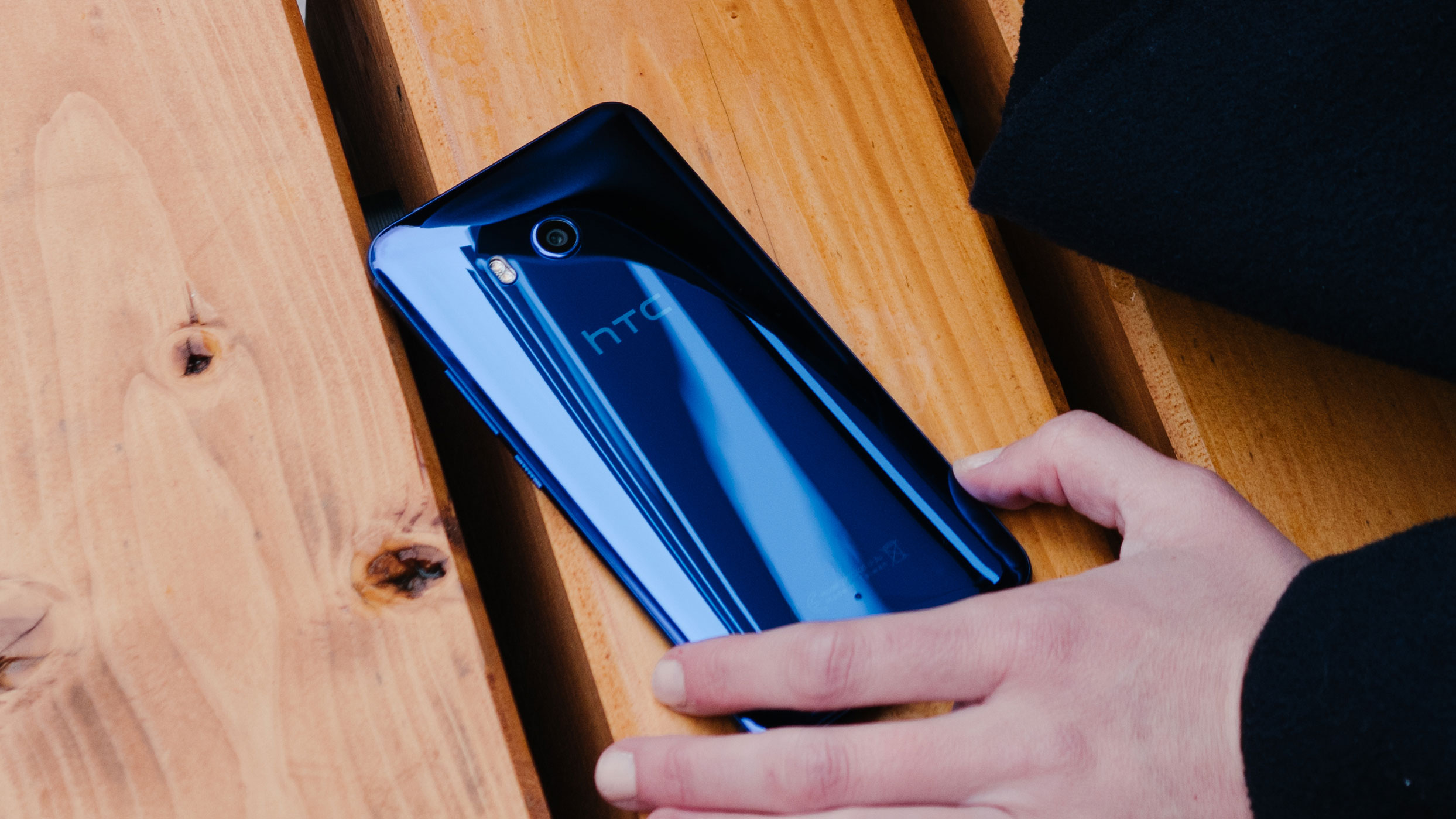
HTC U11
Say hello to your new main squeeze
OS: Android 8 | Screen size: 5.5-inch | Resolution: 1440 x 2560| RAM: 6GB | Storage: 64/128GB (microSD up to 256GB) | Battery: 3000mAh | Rear camera: 12MP | Front camera: 16MP
If you're after a funky phone that provides a sense of individuality, the HTC U11 might be your cup of tea. It's squeezable sides offer a unique experience, allowing you to do things like quickly take selfies without touching the screen, launch your flashlight, and more. HTC is known for providing terrific sound (especially from its own speakers), and the U11 is no exception.
Read the full review: HTC U11 review
See the best HTC U11 telco plans
See the best HTC U11 outright deals

Huawei Mate 10
Great battery life and one of the best cameras on any smartphone
OS: Android 8 | Screen size: 5.9-inch | Resolution: 1440 x 2560| RAM: 4GB | Storage: 64GB (microSD up to 256GB) | Battery: 4000mAh | Rear camera: 12+20MP dual | Front camera: 8MP
Though the Huawei Mate 10 Pro narrowly beat it for a spot on our Best Phone 2018 list, that doesn't mean the regular Mate 10 is unworthy of your attention. On the contrary, it may even be more appealing for users who don't want to give up some legacy features, such as microSD expansion and a headphone jack. Its camera is every bit as good as its big brother, and it's even got a QHD+ display. Pretty good, if you ask us.
Read the full review: Huawei Mate 10 review
See the best Huawei Mate 10 telco plans
See the best HTC U11 outright deals

LG G6
A stylish handset with a terrific display
OS: Android 7 | Screen size: 5.7-inch | Resolution: 1440 x 2880 | RAM: 4GB | Storage: 32/64/128GB | Battery: 3,300mAh | Rear camera: 13 + 13MP dual | Front camera: 5MP
An impressive all-rounder of a phone, the only reason the LG G6 isn't in our top ten is that it lacks a standout feature. Still, it's got a gorgeous 18:9 display, small bezels, a slight design and a great camera. Admittedly, its older chipset holds it back slightly, but the LG G6 is a great handset regardless.
Read the full review: LG G6 review
See the best LG G6 telco plans
See the best LG G6 outright deals
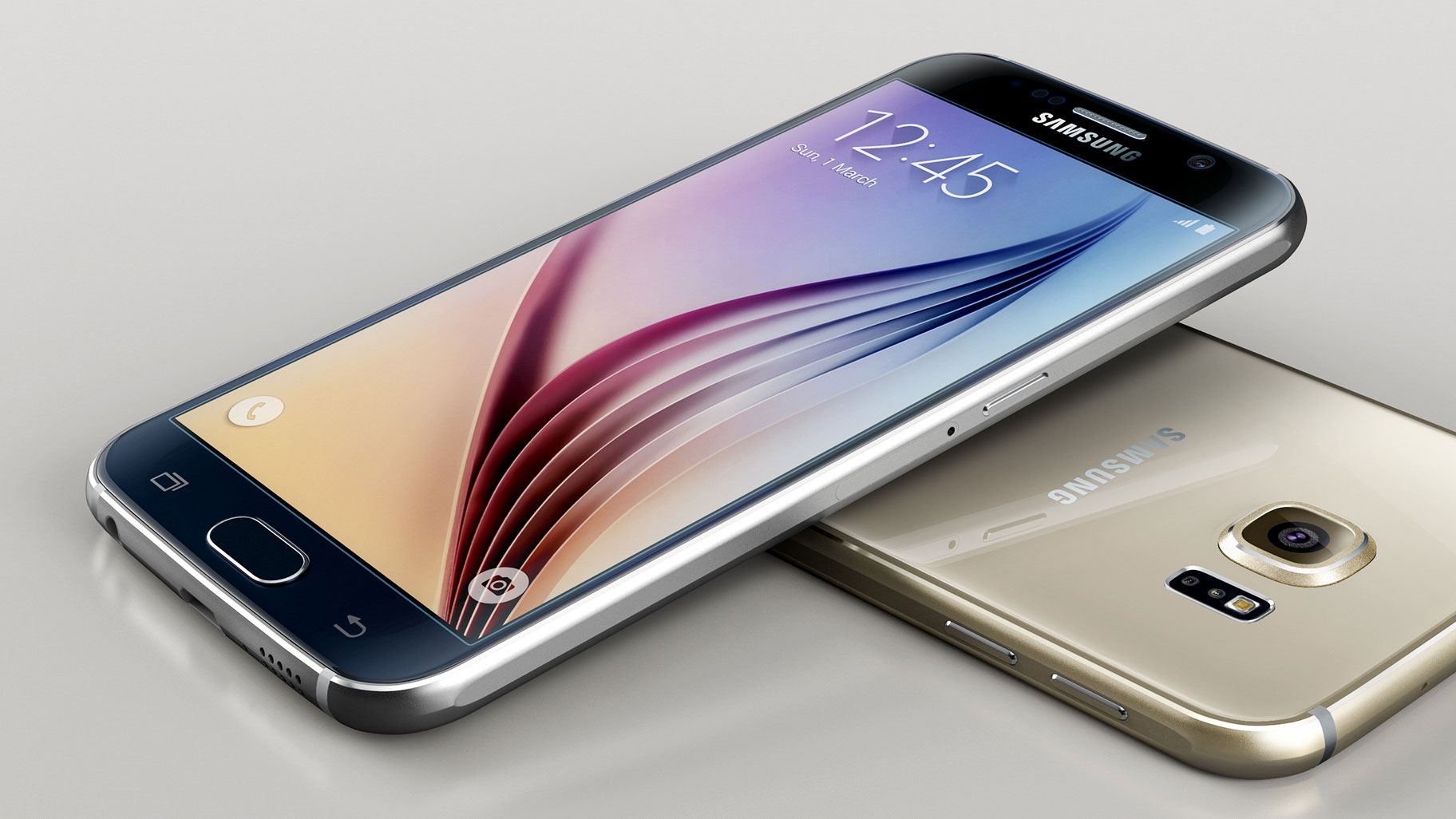
Samsung Galaxy S7
A true return to form from the Korean manufacturer
OS: Android 6 | Screen size: 5.1-inch | Resolution: 1440 x 2560 | Memory: 3GB |Storage:32GB | Battery: 3000mAh | Rear camera: 12MP | Front camera: 5MP
The Galaxy S7 may have just been dethroned by the Galaxy S8, but don't count this old boy out of the race yet. The Samsung Galaxy S7 is a stellar phone. It's a handset that packs great battery smarts, excellent camera abilities and loads of raw power into an increasingly affordable package.
Even though Samsung has replaced the Galaxy S7 with the new Galaxy S8, it's still worth taking a look at the 2016 flagship Samsung phone for your next big purchase.
Read the full review: Samsung Galaxy S7 review
See the best Samsung Galaxy S7 telco plans
See the best Samsung Galaxy S7 outright deals
Contributer : Techradar - All the latest technology news https://ift.tt/2dNOsyj

 Reviewed by mimisabreena
on
Friday, May 18, 2018
Rating:
Reviewed by mimisabreena
on
Friday, May 18, 2018
Rating:














No comments:
Post a Comment